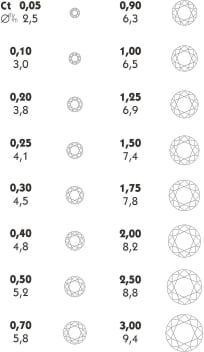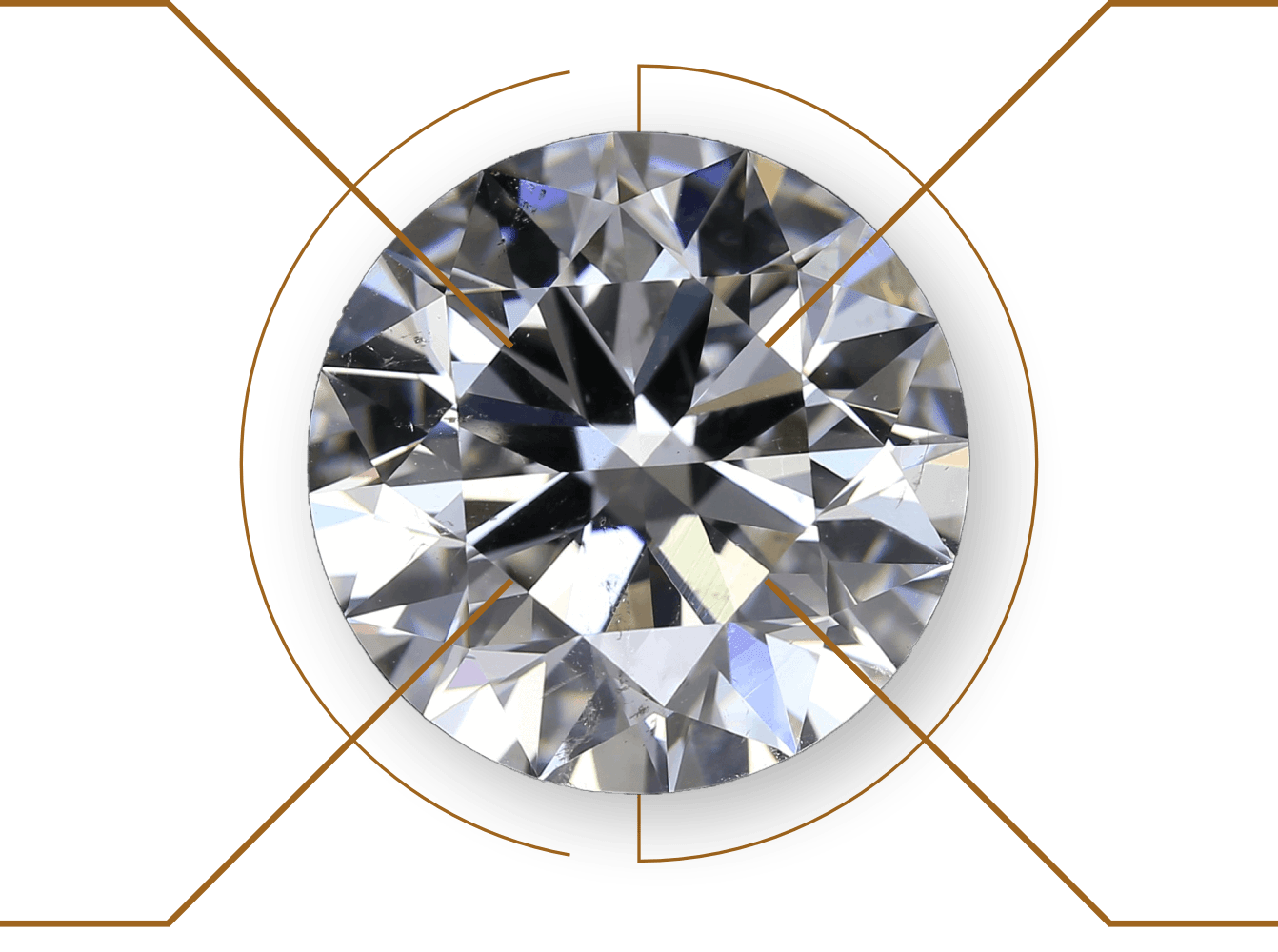The diamonds that are used goes under quality check and are graded keeping in check the 4Cs i.e. Colour, Clarity, Cut and Carat Weight.
Here’s how you can choose your diamonds before investing in them.
Colour

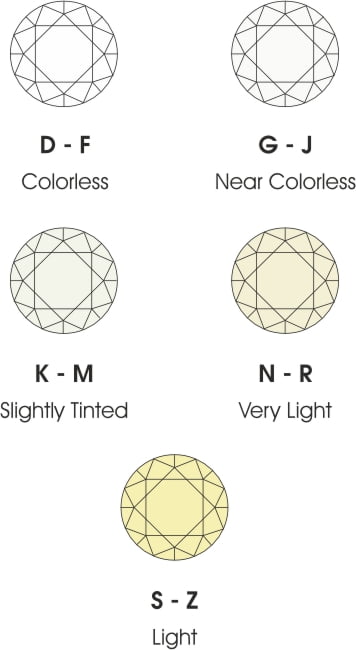
Clarity
The diamonds out there are the output of tremendous heat and pressure which results in characteristics namely inclusions and blemishes.
The clarity of a diamond is determined based on the imperfections present inside or on the diamond.
The diamonds that have minimum inclusions and blemishes are considered in higher graded diamonds and therefore they are costlier than those with more inclusions and blemishes.
For further guide on diamond clarity, mentioned below is the GIA Clarity scale:
Flawless (FL) No inclusions and no blemishes visible under 10x magnification
Internally Flawless (IF) No inclusions visible under 10x magnification
Very, Very Slightly Included (VVS1 and VVS2) Inclusions so slight they are difficult for a skilled grader to see under 10x magnification
Very Slightly Included (VS1 and VS2) Inclusions are observed with effort under 10x magnification, but can be characterized as minor
Slightly Included (SI1 and SI2) Inclusions are noticeable under 10x magnification
Included (I1, I2, and I3) Inclusions are obvious under 10x magnification which may affect transparency and brilliance

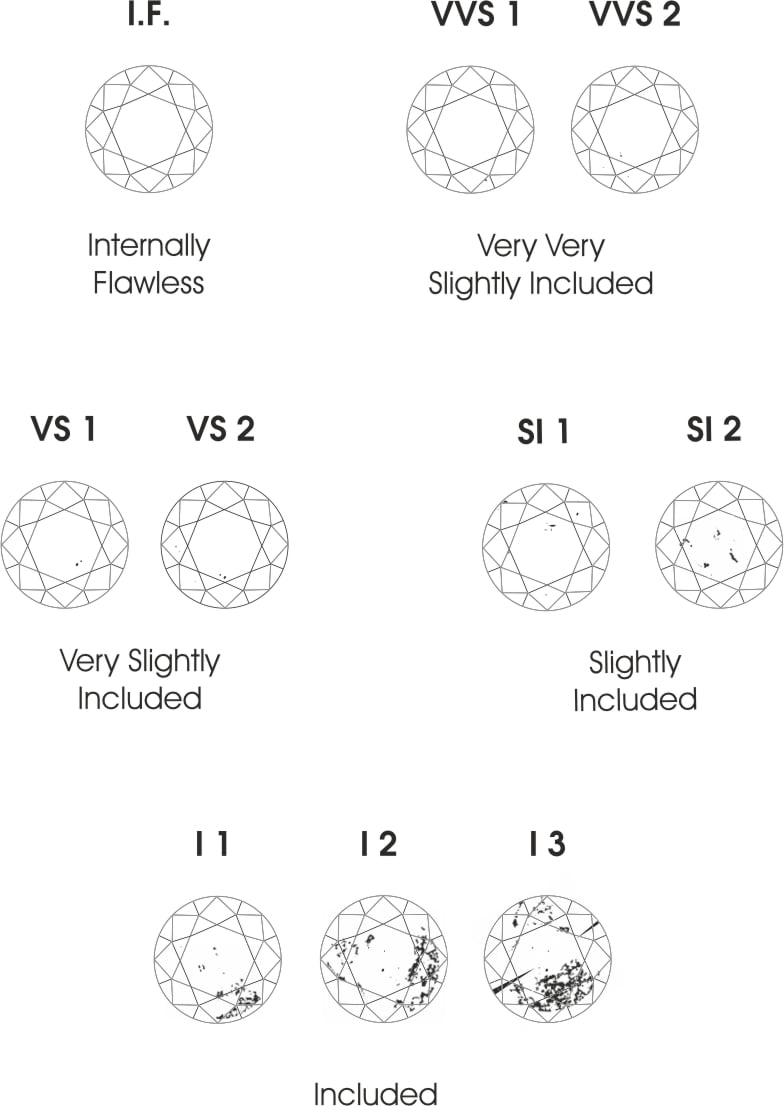
Cut

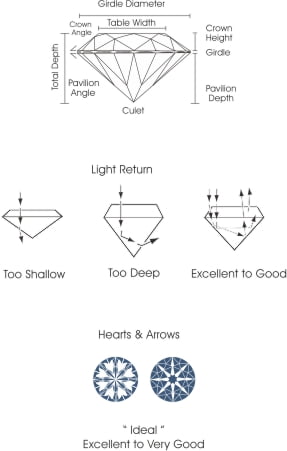
DIAMOND CUT GRADE CHART AS PER GIA
| Grade | Description |
|---|---|
| Excellent | Excellent Cut Diamonds provide the highest level of fire and brilliance. Because almost all of the incoming light is reflected through the table, the diamond radiates with magnificent sparkle. |
| Very Good | Very Good Cut Diamonds offer exceptional brilliance and fire. A large majority of the entering light reflects through the diamond’s table. To the naked eye, Very Good diamonds provide similar sparkle to those of Excellent grade. |
| Good | Good Cut Diamonds showcase brilliance and sparkle, with much of the light reflecting through the table to the viewer’s eye. These diamonds provide beauty at a lower price point. |
| Fair | Fair Cut Diamonds offer little brilliance, as light easily exits through the bottom and sides of the diamond. Diamonds of a Fair Cut may be a satisfactory choice for smaller carats and those acting as side stones. |
| Poor | Poor Cut Diamonds yield nearly no sparkle, brilliance or fire. Entering light escapes from the sides and bottom of the diamond. |
Carat

